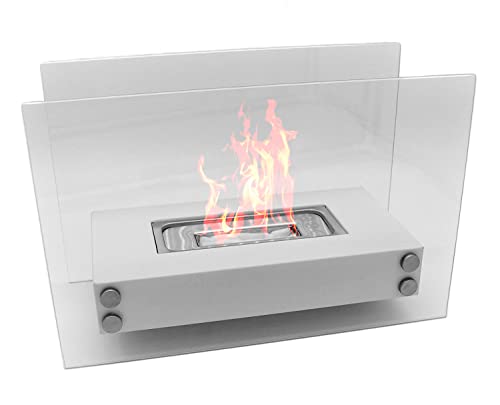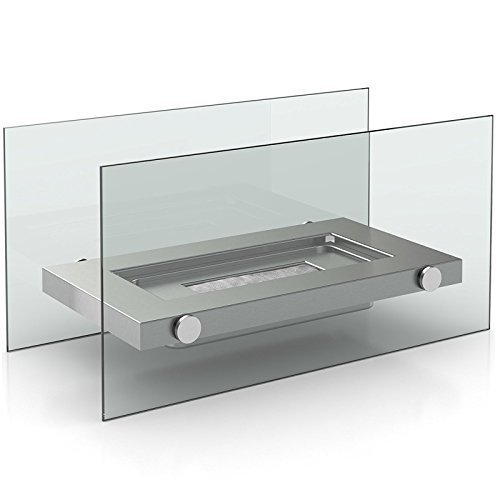The Advantages of an Ethanol Fireplace

A fireplace made of ethanol could bring a touch of elegance to any room. It is also simple to maintain and clean. A
bio-ethanol fireplace that is mounted on a wall can be mounted using brackets similar to the ones used on flat screen TVs.

It is portable and doesn't require chimneys. Renters will appreciate it as a great option.
Cost
Ethanol Fireplaces can be expensive, but they are an excellent addition to any home. To avoid spending too much you must carefully evaluate the dimensions of your fireplace and room before making a purchase. This will ensure that your fireplace will fit into your space, and that you have enough space to make use of it. Additionally, you should make sure that the fireplace is safe to use when you have pets or children in your home.
Bioethanol is used to power fireplaces that use ethanol instead of traditional wood burning fireplaces. This kind of fuel is made from the fermentation of various plants, including soybeans, corn and beets. It is an energy source that is renewable. It produces very little or no smoke, which means it's safe for people who have sensitive lungs.
The majority of ethanol fireplaces have an electric burner that you fill with ethanol, and then light the flame to create the fire. They can be easily moved around your home. Some have wheels to make them easier to move around. If you're looking to install an ethanol fireplace in your house it is best to talk to a professional before doing so.
They can be paired with existing wood stoves. They are easy to clean and maintain and they create a unique atmosphere. They are more efficient than gas fires, and can be used in any room in your home.
While ethanol fireplaces provide a wonderful source of atmosphere, they shouldn't be used as primary heating sources. They produce anywhere from 3000 to 20,000 BTUs, and cannot replace the air conditioner or furnace. They can give additional warmth and a warm light in any room.
The cost of a wall-mounted ethanol fireplace varies significantly. The cost is determined by the size and installation of the unit, and also the materials used. It can cost from $30 for a basic tabletop ethanol fireplace, to $20,000 for a custom outdoor fireplace that can be constructed into an island or table.
Energy efficiency
Ethanol fireplaces use bioethanol as a fuel, and they don't require a chimney since it burns cleanly and does not generate any harmful or harmful emissions. They are portable and can be used indoors as well as outdoors. They are available in a variety of sizes and designs, from walled-in designs with glass panels to spherical or freestanding fireplaces as being used as tables for the living room that feature inbuilt flames. They're a great alternative to wood, gas or electric fireplaces. They can be used in conjunction with your existing home heating system.
The greatest benefit of ethanol fireplaces is that they are extremely simple to operate. Simply add the fuel and then light it using an extended lighter. Then, just like with a regular fireplace, you can adjust the flames to suit your needs. The majority of the top fireplaces made of ethanol come with step-by-step instructions that will assist you in using them in a safe manner. Follow these steps to avoid potential safety hazards or spillage.
Another benefit of ethanol fireplaces is that they consume less energy than conventional fireplaces. This is particularly true if they are used in a small room or on your patio. However, it is essential to remember that they don't offer an abundance of heat and are not meant to replace your central heating system. Use them as an ornamental element within your home, and not as the primary source of heating.
Although bioethanol fires (
utahsyardsale.com) are safer than traditional fireplaces they can produce byproducts that could be harmful to your health. These include carbon monoxide, carbon dioxide, benzene as well as other organic compounds, nitrogen oxide, formaldehyde, and ultrafine combustion particles. It is therefore important to keep your ethanol fireplaces in a well-ventilated space, and to use them with care.
Never add fuel to a fire that has been extinguished or refuel it with fuel when the flame is burning. This could result in a spill and cause other surfaces to become potentially flammable. In order to prevent this from happening, you must place your ethanol stove on a non-flammable fireplace mantle or shelf.
Safety
If it is installed correctly and used with diligence, an ethanol fireplace will not be more dangerous than other appliances that generate fire. There's always the chance that anything can be wrong with any flame-generating device.
If you are concerned about the security of an ethanol fireplace make sure you choose a fireplace with childproof locks and automatic shutoff mechanisms. These features will ensure that your pets and family are safe while the fireplace is burning. Find models with built-in venting, which eliminates the need for an external chimney or flue.
Ethanol fires are safer than gas fire places since they don't use a fuel pipe that runs from the home to the burner. This makes them more reliable and lowers the risk of leaks or other problems with the connections.
Because
bio ethanal fire ethanol is a liquid, it can easily spill over the edge of the combustion chamber in case you come into contact with it. This could cause the flame to spread out of control, which can be a major fire risk within your home. To avoid this it is recommended to avoid putting flammable items, such as curtains and rugs, from the
biofuel fireplace insert.
The burner in an ethanol fireplace has been designed to stop spills. It is equipped with a special media that holds the fuel in place so it can't escape from the burner when it's operating. The outer shell of the burner is also constructed from ceramic, which is resistant to high temperature.
In addition to these security features, an ethanol fireplace is also self-contained and does not require gas lines. This means there is no chance of leaks and other issues caused by a conduit which could be filled with toxic fuel.
Another important safety aspect is the fact that a bioethanol fireplace is vented through your ceiling, not the wall. This decreases the chance of an explosion, or other accidents resulting from an incident with a fire.
It's also important to remember that ethanol fireplaces aren't able to produce a lot of heat, therefore they should not be used as a substitute for your main heating system. Furthermore, they can adversely affect the indoor air quality in your home. According to a study conducted by Fraunhofer Institute for Wood Research WKI These devices release fine particles of combustion and gases which can cause lung damage.
Installation
Ethanol fireplaces are a convenient and cost-effective option to add warmth and ambiance to your home without the need for chimneys or flues. Bioethanol fuel is the primary fuel used and is produced by the fermentation of a variety of plants. It is a renewable fuel source. This makes them more eco green than traditional wood- or gas-burning fireplaces. They can be used indoors or outdoors. They are simple to install and need minimal maintenance.
Before beginning the installation process, be sure to read the instructions provided by the manufacturer for your particular model. These instructions will guide you through the installation and assembly procedure. The right tools will streamline the process, and eliminate any mistakes or delays. You'll require, for instance a screwdriver, a leveler a measuring tape, and if you want to make it yourself, sandpaper.
It's crucial to know the space you have available and how much it will take. Additionally, it's essential to check if your fireplace is vented properly to the outside. If not, it may result in fumes or smoke. Be sure to keep the fireplace free from any flammable materials such as drapes or curtains.
A fireplace made of ethanol can be easily moved from one place to another. This flexibility is perfect for homes that have limited space or people who prefer a portable option. It can be moved from outdoors to indoors, making it an ideal choice for tiny houses or apartments. Follow the safety guidelines of the manufacturer and ensure it is kept away from children and animals.
Cleaning your fireplace regularly is also important. Cleaning the burner will ensure that it isn't blocked and ensure that the fuel is flowing properly. To do this, you can use a damp cloth to wipe away any residue or soot that has built up. This will help prolong the lifespan of your fireplace and improve its performance. You should also store your Ethanol fuel in a dry, cool place to ensure its quality and efficiency.

 A fireplace made of ethanol could bring a touch of elegance to any room. It is also simple to maintain and clean. A bio-ethanol fireplace that is mounted on a wall can be mounted using brackets similar to the ones used on flat screen TVs.
A fireplace made of ethanol could bring a touch of elegance to any room. It is also simple to maintain and clean. A bio-ethanol fireplace that is mounted on a wall can be mounted using brackets similar to the ones used on flat screen TVs. It is portable and doesn't require chimneys. Renters will appreciate it as a great option.
It is portable and doesn't require chimneys. Renters will appreciate it as a great option.